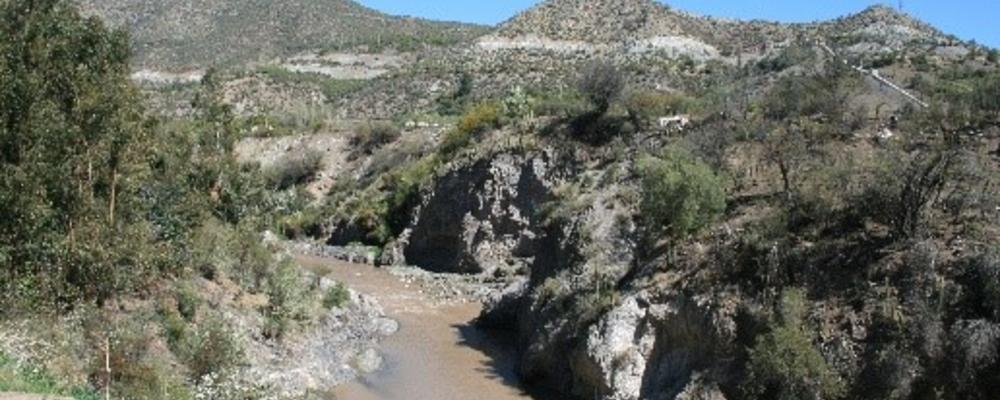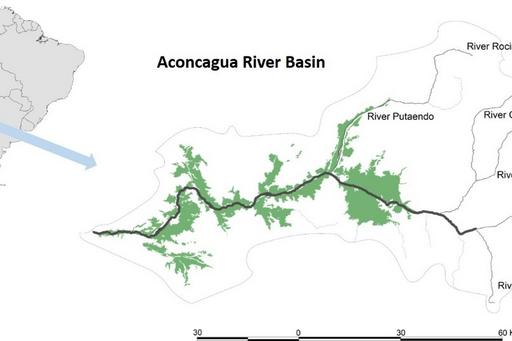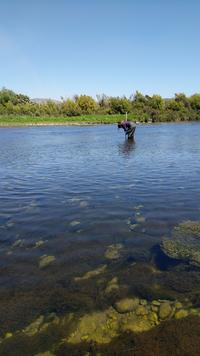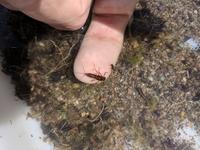
Case Study: Aconcagua River in Chile - the polluted drinking water supplier
The Aconcagua River is about 142 kilometers long and runs through five Chilean provinces, supporting a number of cities along its way. Agriculture, mining, and chemical production are the most important economic activities in the area. About 30% of Chilean grapes and peaches, as well as a good part of Chilean avocado are produced in the Aconcagua river basin. These activities inevitably result in pollution by heavy metals and pesticides, but also micropollutants from households and wastewater treatment plants are emitted into the river.
Introduction
Since the 1960s, Chilean agriculture has experienced rapid, increasingly diversified, export-led economic growth. The growth of the agricultural sector is evidenced by the increase in agricultural GDP of 2.7% between 1963 and 1982, to 5.6%, between 1983 and 2007, making it one of the pillars of the national export structure.
This "boom" of Chilean agriculture caused a progressive growth of imports of pesticides, which rose by 48% in the decade of the 90s, with figures that reached 16,072 tons in 1997 and 17,942 tons in 1998. This increase in pesticide use occurred in an unregulated environment of free sale and easy access by the population, accompanied by a lack of knowledge about the effects of pesticide use on human health and the environment.
The focus of the social science part of the Chilean case study has been to investigate the regulation of pesticides in Chile: high concentrations of pesticides in agricultural products and surface waters point out to a need to reduce their use and the negative effects on human health and the environment. The objective is to identify the reasons behind the high rates of pesticide use and strategies to improve the effectiveness of current regulations.

Case study aims
The study aims to understand the effect of complex chemical pollution on aquatic ecosystems. Therefore, FRAM will characterize the pollution and biological status of the Aconcagua River and streams running through anthropogenised areas (agricultural, industrial, and urban areas). FRAM will apply state-of-the art analytical methodologies to determine pollution fingerprints and the ecological health of aquatic communities will be assessed using DNA-based methods, such as DNA-metabarcoding and omics techniques.
Collaboration partners
Several research groups support our activities in Chile. Local and international environmental scientists collaborate and contribute to reach FRAM objectives. The involved institutions are:
- The Institute of Agricultural Research from the Ministry of Agriculture of Chile.
- The University of Concepcion through the Interdisciplinary Center for Aquaculture Research and the Laboratory of Chemical Oceanography in Chile.
- The Department of Effect-Directed Analysis at the Helmholtz Centre for Environmental Research in Germany
- The Ecotoxicology and health risk research team at the Nanjing University in China
- The Environmental Toxicology Unit at Ghent University in Belgium
First field study
In September-October 2018 we implemented our first field campaign in Chile, which was run along the Aconcagua river. The river contains one of Chile’s largest agricultural areas, with major vineyards and vegetable farming, hence an area with extensive pesticide use. Additionally, the area is one of Chile’s biggest copper-mining regions and a major petrochemical installation can be found at the river mouth. In summary, the river hosts a broad range of industrial activities that are all well known to emit toxic chemicals into the surrounding environment.
Second field study
Based on the results, we are currently setting up the next sampling campaign. This was meant to be implemented in autumn 2020, but has been postponed due to the Corona pandemic. This study will in particular extend the scope of the considered chemical pollutants by including metal pollution from mining activities.

